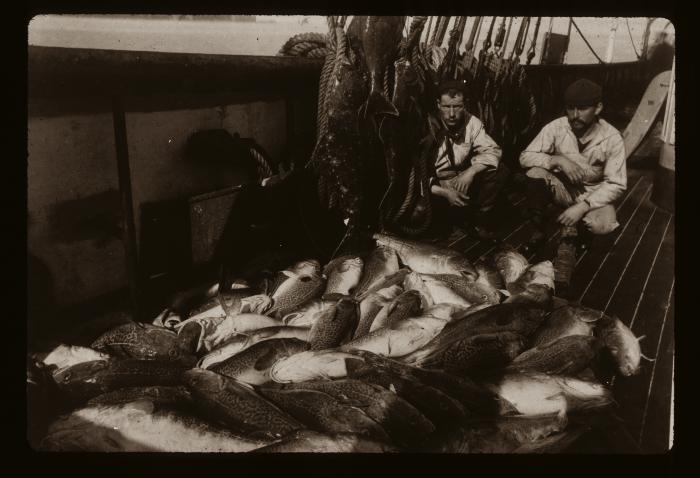Salt Fish — Sulunaq, Salt Fish

For centuries, people around the world have enjoyed salted fish. The interaction of salt and fish enzymes creates a wonderful flavor, especially in cod. Salt is also an effective preservative. It limits the growth of bacteria. Fishermen working in both the Atlantic and Pacific oceans harvested cod in great quantities and salted it for the journey home.
Salt cod was a popular food along the west coast of the United States in the 19thcentury, and entrepreneurs began harvesting cod in Alaska waters in the 1860s to sell to this market. Successful cod fishing in the Shumagin Islands and along the coast of the Alaska Peninsula led to the development of shore stations where fish were salted for shipment south between 1880 and 1920. Cod, herring, and salmon were also salted in the Kodiak region. These activities, and the availability of reliable quantities of commercial salt, likely led to the popularity of salt cod on Kodiak dinner tables.
Alutiiq harvesters continue to salt cod. Processing begins by completely covering a clean filet of fish with salt. Put the filet on a tray filled with salt and then cover it with more salt. Experienced chefs advise leaving the filet in a cool place and allowing it to weep. After about a week, wash the filet well to remove excess salt. If you don’t, the salt will create craters in the meat. Today people vacuum pack pieces of salt cod and store them in their freezers. In the past, however, Alutiiq families kept salt cod in a covered bucket.
When you are ready to cook the fish, soak it in water to remove more of the salt, and then use it any recipe. One elder drops pieces of salt cod into boil water. The minute the water re-boils, he removes the fish out so it will not get rubbery.
